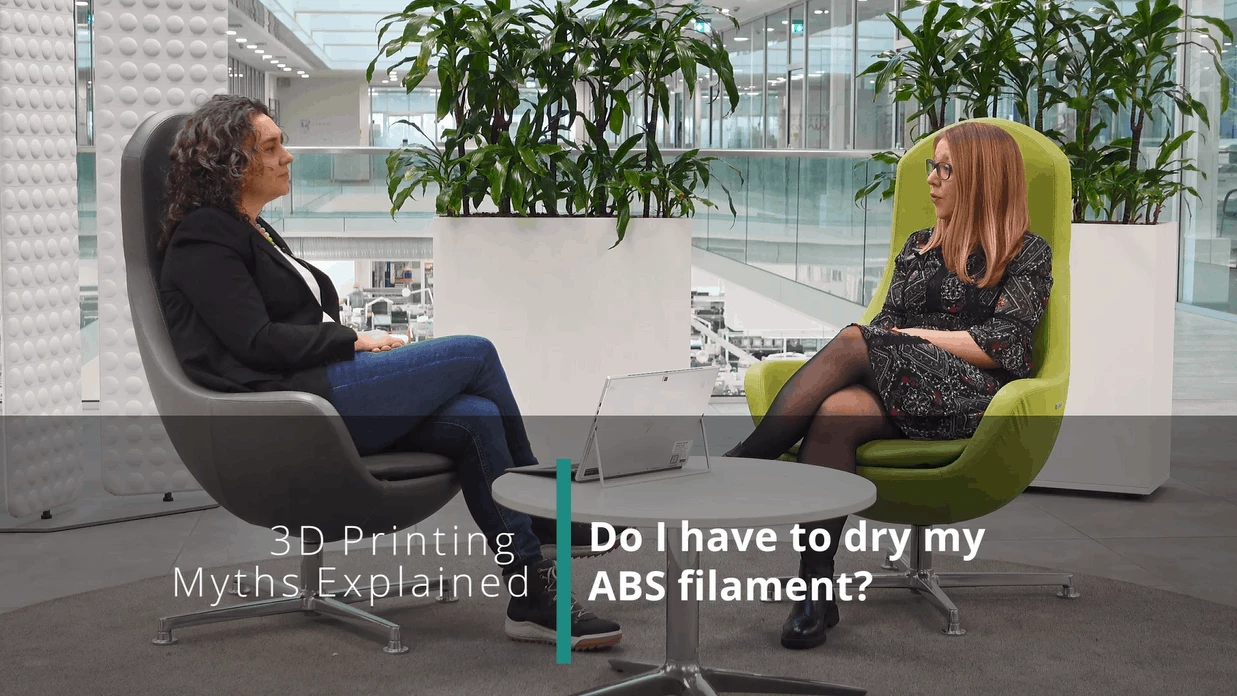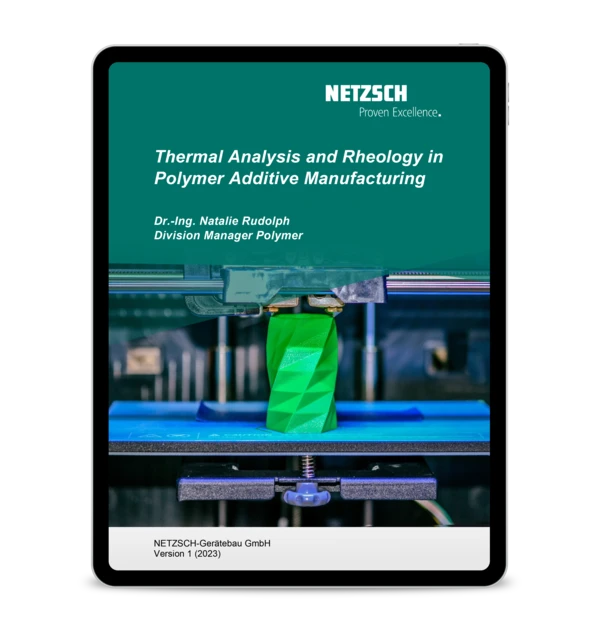
24.02.2021 by Milena Riedl, Dr. Natalie Rudolph
Do I Have to Dry my ABS Filament?
Today, we answer the question if ABS filament absorbs water from the humidity in the air. Dr. Natalie Ruldolph explains why different plastics react differently to humidity in the environment and gives advice on what home users can do about it.
As a response to our video series in which we introduced the 7 technologies of Additive Manufacturing, we have received a huge amount of direct messages and emails from you.
For now, we took your questions related to common 3D printing issues and categorized them into what we call 3D Printing myths – common concerns and sometimes misconceptions of this industry.
Do I have to dry my ABS filament?
Dr. Natalie Rudolph explains why different plastics react differently to humidity in the environment and how this results in extrusion problems. Again, there are analytical devices that can determine the water content in filament, however, what can home users do?
We explain what you should keep in mind when unpacking and storing ABS filament. In addition, we give advice on how to dry filament in your oven at home.
Enjoy watching and leave your questions in the YouTube commentary!
Are the fumes you smell during 3D printing harmful or even toxic?
Dr. Natalie Rudolph explains how analytical devices can detect and identify the volatiles in such fumes released during 3D printing. On this basis, she goes on to give important tips on what to pay attention to when printing with a 3D printer at home.
Did you miss the video? Click here!

FREE E-Book
Thermal Analysis and Rheology in Polymer Additive Manufacturing
Discover the secrets behind AM's game-changing capabilities! Our newly released ebook delves deep into the heart of AM, unveiling the power of reliable material characterization techniques, specifically thermal analysis and rheology.